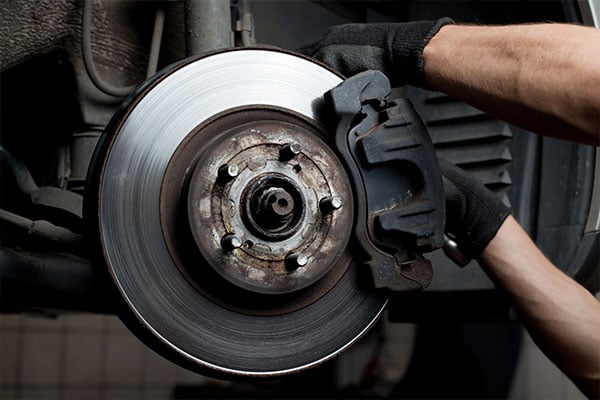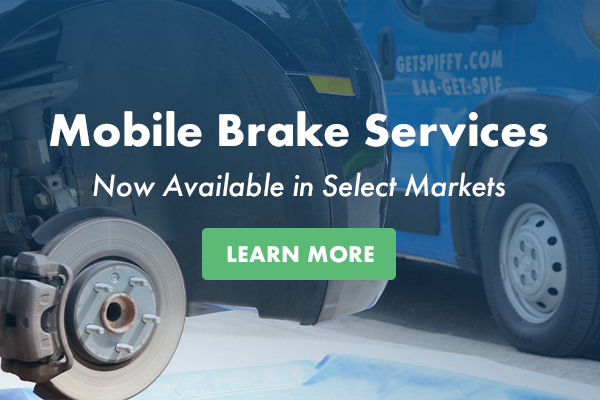Preventative vehicle maintenance can be tricky enough, and aspects like brakes often make for a confusing experience. Plenty of car owners turn to their local dealerships for any brake troubles only to be forced to pay more for manufacturer-specific replacement parts. Worst of all, you may not know any more about the process - like the difference between brake pads or rotors, for example - by the end than when you started.
If you’re looking to learn more about your car’s brakes, let’s start by looking at the two most important parts needed to keep you and your passengers safe.
Brake Pads and Rotors, Explained
At the heart of your car’s braking system lies the brake rotors. The average passenger vehicle uses rotors known as disc brakes, while larger heavy-duty trucks rely on drum brakes. In either case, the rotor is the primary component that brings you to a complete stop.
On the other hand, brake pads work in cooperation with rotors to ensure a smooth braking experience. These pads press down on the rotors via calipers, which helps a vehicle slow down without grinding. Understandably, the more you use your brakes, the more your pads will gradually wear out.
The standard advice for maintaining your brake pads and rotors is to judge how easy it is to come to a complete stop. If you notice that it’s taking too long to slow down, you should consider taking a trip to your preferred mechanic and getting a closer look at your pads and rotors.

What Does a Brake Service Entail?
Typically, a “brake job” is focused on one axle at a time - either the front or the rear. While you can get both axles addressed in one service, it’s best to complete one axle at a time instead of jumping back and forth between the front and rear axles.
If you’re seeking a brake service, you’re more likely to have your pads replaced before your rotors. Brake pads typically last around 40,000 miles, but the distance varies based on your driving habits. Brake rotors last a while longer, up to 65,000 miles in some cases. However, it’s crucial to regularly inspect your rotors, whether you’re having your brake pads replaced or going in for a casual maintenance appointment.
When getting your brake pads replaced, it’s essential to have your rotors turned to ensure even wear over time. This will help extend their lifespan, which will help your wallet in the long run as brake rotors have a slightly higher cost than brake pads.
Signs You Need to Replace Your Brake Pads and Rotors
There are certain warning signs to keep in mind in the event of worn brake pads or rotors. These tips may be the difference between safer driving and a significantly increased risk of an accident or injury.
- Worsened braking performance: You’ll first notice a less efficient braking experience when your brake pads get too thin. For example, you’ll go to brake, but it will take much longer to come to a complete stop than in the past. This is a significant warning sign, as a decreased braking performance can lead to an accident more than any other noticeable change - especially if you live in a colder climate where snow and black ice are prevalent.
- Squeaking: Outside of a noticeably impacted performance, your brakes will begin to squeak when the pads wear down close enough to the rotors. However, this sign can be misleading to some drivers, as your brakes can squeak for a few other reasons, such as very high or below freezing temperatures.
- Grinding: If your brakes ever go from squeaking to a full-on grinding sound, that’s the sign that the brake pad has worn down enough for the caliber to contact the rotor. In this case, you should get a brake pad replacement and an inspection of your rotors. You may get away with a brake rotor rotation, but if enough damage is done, you’ll be better off replacing the rotors altogether.
What Happens If You Ignore Brake Services?
So, now that you know more about the ins and outs of your brakes, you should understand the importance of quality brake maintenance. But let’s pretend that you don’t. What can you expect from ignoring routine brake services?
As we’ve alluded to above, ignoring your brakes can be a reckless decision. The need to come to a complete stop is crucial in any instance of forward momentum, whether you’re driving slow in a school zone or going 65 miles per hour on the highway.
Not only can you damage your rotors by ignoring your brake pads, but you can eventually damage your brake calipers after enough time. The cost to replace calipers is significantly more expensive and time-consuming than simply changing brake pads or rotors. At that point, it would be a better investment to keep up with routine brake pad and rotor replacements.
Stay Ahead of Any Issues with Mobile Brake Services
Like any significant maintenance item, brakes can be a handful to manage. Fortunately, you don’t have to waste time in a waiting room, getting upsold on services you don’t need.
With Spiffy, you can book a brake pad or rotor replacement service from the comfort of your home or office. Our Technicians come directly to you to work on your brakes, so you can stay focused on the tasks at hand without tying up your day.
Are you interested in learning more about our mobile brake services? We’re currently expanding availability across the United States, so give us a call to see if we can take care of your car today!





